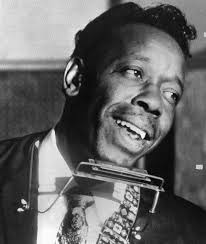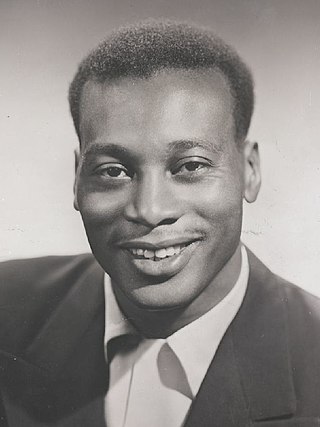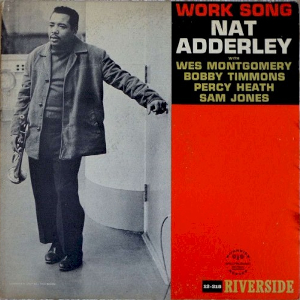Related Research Articles

Jimmy Rogers was an American Chicago blues singer, guitarist and harmonica player, best known for his work as a member of Muddy Waters's band in the early 1950s. He also had a solo career and recorded several popular blues songs, including "That's All Right", "Chicago Bound", "Walking by Myself", and "Rock This House". He withdrew from the music industry at the end of the 1950s, but returned to recording and touring in the 1970s.
Swamp blues is a type of Louisiana blues that developed in the Black communities of Southwest Louisiana in the 1950s. It incorporates influences from other genres, particularly zydeco and Cajun. Its most successful proponents include Slim Harpo and Lightnin' Slim, who enjoyed national rhythm and blues hits.

Skint Records is a Brighton and Hove based dance music record label owned by JC Reid, Tim Jeffery and Damian Harris. It was created as a sublabel of Loaded Records, also founded by Reid and Jeffery. Along with Wall of Sound, the label was a leader in the big beat music scene of the mid to late 1990s.

Slim Harpo was an American blues musician, a leading exponent of the swamp blues style, and "one of the most commercially successful blues artists of his day". He played guitar and was a master of the blues harmonica, known in blues circles as a "harp". His most successful and influential recordings included "I'm a King Bee" (1957), "Rainin' in My Heart" (1961), and "Baby Scratch My Back" (1966), which reached number one on Billboard's R&B chart and number 16 on its broader Hot 100 singles chart.

Katie Webster, born Kathryn Jewel Thorne, was an American boogie-woogie pianist.

Lonnie Brooks was an American blues singer and guitarist. The musicologist Robert Palmer, writing in Rolling Stone, stated, "His music is witty, soulful and ferociously energetic, brimming with novel harmonic turnarounds, committed vocals and simply astonishing guitar work." Jon Pareles, a music critic for the New York Times, wrote, "He sings in a rowdy baritone, sliding and rasping in songs that celebrate lust, fulfilled and unfulfilled; his guitar solos are pointed and unhurried, with a tone that slices cleanly across the beat. Wearing a cowboy hat, he looks like the embodiment of a good-time bluesman." Howard Reich, a music critic for the Chicago Tribune, wrote, "...the music that thundered from Brooks' instrument and voice...shook the room. His sound was so huge and delivery so ferocious as to make everything alongside him seem a little smaller."
Manuel Parrish is an American songwriter, vocalist and producer. He, along with artists such as Yellow Magic Orchestra, Kraftwerk, Art of Noise, Arthur Baker, Afrika Bambaataa, John Robie, Jellybean Benitez, Lotti Golden, Richard Scher and Aldo Marin, helped create and define electro in the early 1980s.

Leslie Johnson, better known as Lazy Lester, was an American blues musician who sang and played the harmonica and guitar. In a career spanning the 1950s to 2018, he pioneered swamp blues, and also played harmonica blues, rhythm and blues and Louisiana blues.

Joseph Denton "Jay" Miller was an American record producer and songwriter from Louisiana, whose Cajun, swamp blues, and swamp pop recordings influenced American popular culture.

Arthur Neal Gunter was an American blues guitarist and musician. He was best known for his song "Baby Let's Play House", which was later a hit single for Elvis Presley.
"Shake Your Hips" is a song written by Louisiana bluesman Slim Harpo. He recorded it in February 1966 for producer J. D. Miller for a follow-up single to his hugely successful "Baby Scratch My Back". Miller's Excello Records released it as a single in June 1966 and in October, the song became the lead track for Slim Harpo's 1966 album Baby Scratch My Back, which was a long-term release in Excello's catalogue.
Warren Storm was an American drummer and vocalist, known as a pioneer of the musical genre swamp pop; a combination of rhythm and blues, country and western, and Cajun music and black Creole music.
"Baby Let's Play House" is a song written and originally recorded by Arthur Gunter in 1954 on the Excello Records label, and covered by Elvis Presley the following year on Sun Records. A line from the song was borrowed by John Lennon for his Beatles song "Run for Your Life", released on Rubber Soul in 1965.
"Baby Scratch My Back" is a 1965 rhythm and blues song by blues singer Slim Harpo. It is mostly an instrumental piece with occasional monologue and harmonica fills by Harpo. Although it had some success with rock audiences, "Baby Scratch My Back" was a number one hit in 1966 on the magazine's Hot Rhythm & Blues Singles chart. It was Harpo's most commercially successful single and was subsequently recorded by several musicians.
Cornelius Green III, known professionally as Lonesome Sundown, was an American blues musician, best known for his swamp blues recordings for Excello Records in the 1950s and early 1960s.
Silas Hogan was an American blues musician who played swamp blues and Louisiana blues. His most notable recordings are "Airport Blues" and "Lonesome La La". He was the front man of the Rhythm Ramblers. Hogan was inducted into the Louisiana Blues Hall of Fame.

Work Song is an album by jazz cornetist Nat Adderley, recorded in January 1960 and released on the Riverside label. It features Adderley with Bobby Timmons, Wes Montgomery, Sam Jones, Percy Heath, Keter Betts and Louis Hayes in various combinations from a trio to a sextet, with the unusual sound of pizzicato cello to the fore on some tracks.
"Chicago" Bob Nelson was an American blues musician.
Gabriel Perrodin, known as Guitar Gable, was an American Louisiana blues, swamp blues and swamp pop musician. He was best known for recording the original version of "This Should Go On Forever", and his part in the vibrant swamp blues and pop scene in Louisiana in the 1950s and early 1960s.
Nashboro Records was an American gospel label principally active in the 1950s and 1960s.
References
- 1 2 Colin Larkin, ed. (2002). The Virgin Encyclopedia of Fifties Music (Third ed.). Virgin Books. pp. 127/8. ISBN 1-85227-937-0.
- ↑ Hannusch, Jeff (September 2003). "Masters of Louisiana Music: Cornelius Green, 'Lonesome Sundown'". Offbeat.com. Retrieved 28 October 2021.
- ↑ King Jr., Martin Luther (1968). "Remaining Awake Through A Great Revolution". Excello Records. Retrieved 2020-09-03.
- ↑ Gillett, Charlie (1996). The Sound of the City: The Rise of Rock and Roll ((2nd Ed.) ed.). New York: Da Capo Press. pp. 93–94. ISBN 0-306-80683-5.